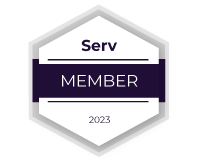Developing a business strategy requires safeguarding data and operations. For that, cloud computing is providing developers and IT departments with the ability to focus on what matters most, allowing them to avoid undifferentiated work like procurement, maintenance, and capacity planning. With this blog, we will have a deep understanding of Cloud Migration and its benefits, guiding you to choose the right cloud model for your business and the process of implementing these services with the help of various tools for migration.
CLOUD MIGRATION - A GATEWAY TO TRANSFORMATION
Cloud Migration stands for the process of moving company’s assets, services, databases, IT resources, and applications, whether partially or entirely, into the cloud. Typically, it involves the transition from on-premises data centres or legacy infrastructure to the cloud. This procedure requires meticulous analysis, thoughtful planning, and precise execution to ensure that the cloud solution integrate seamlessly with the needs specific to business. It includes productivity software, platforms for business services, enterprise databases, remote desktops, web/mobile applications, Internet of Things, and network administration tools. According to a source, the Cloud Migration Market size is expected to grow from USD 181.31 billion in 2023 to USD 628.83 billion by 2028, at a CAGR of 28.24% by 2028.
UNDERSTANDING CLOUD COMPUTING
-
TYPES OF CLOUD SERVICES
Software as a Service (SaaS): It is a type of software that is run and managed by the service providers, over the internet. A SaaS offering allows you to solely focus on how to utilize the software, without worrying about the service maintenance. Examples of SaaS applications are Salesforce, Dropbox, Slack and Mailchimp. It is estimated that SaaS processes will account for 75 percent of the total workload and rapidly increase in the near future.
Platform as a Service (PaaS): It is a type of software that is run and managed by the service providers, over the internet. A SaaS offering allows you to solely focus on how to utilize the software, without worrying about the service maintenance. Examples of SaaS applications are Salesforce, Dropbox, Slack and Mailchimp. It is estimated that SaaS processes will account for 75 percent of the total workload and rapidly increase in the near future.
Infrastructure as a Service (IaaS): ): It contains the basic building blocks for cloud IT. They are the cloud-based platforms using a pay-as-you-go model (a payment method that charges based on usage) to provide computing infrastructure, enabling high level of flexibility and control over your IT resources. For instance, AWS EC2, Rackspace, Digital Ocean and Google Compute Engine are examples of IaaS. -
TYPES OF CLOUD MIGRATION
Full data center conversion: This is the most complex and time-consuming form of cloud migration. In this type, an organization seeks a public cloud host to outsource all its data. It migrates both internal and external business processes away from in-house data centre to a public cloud architecture. Due to its complexity, many companies opt for hybrid or multi-cloud frameworks to manage their daily operations.
Transfer of support for the business process software: Some companies chose to migrate only a certain portion of their IT resources to a public cloud host while maintaining a private cloud and complex networking support for internal activities.
Web/mobile application optimization: : This is the simplest form of cloud migration which involves moving only a limited set of web or mobile applications to public cloud architecture for hosting and development operations management. -
TYPES OF CLOUD DEPLOYMENT MODELS
Cloud Deployment refers to how the software is made available. As a result, it affects who has the access to data on the cloud and in what ways. There are three types of cloud deployment models:
Public Cloud: This model implies making digital assets on the cloud publicly available over the internet. For example, Google Workspace, Amazon Web Services, Microsoft 365 etc.
Private Cloud: Also known as “corporate cloud”, it serves a single company and doesn’t provide access of data to the unauthorized users.
Hybrid Cloud: As the name suggests, this model is a combination of on-premises infrastructure, public cloud, and private cloud. Typically, large companies use it for keeping important data in private and various support-oriented services in public. This connects the cloud resources to internal system.
BENEFITTING FROM CLOUD MIGRATION
- Cost Reduction: Cloud providers offer managed services that reduce operational overhead and simplify maintenance, freeing up resources for innovation and product development. Large organizations can save 40% to 50% of their traditional IT operating costs on average by transferring in-house data center facilities to a public cloud service provider.
- Scalability: Businesses adopt cloud migration strategies for better scalability, availability, and faster deployment of software services. Shifting the workload on the cloud, it becomes easy to respond to peak demands and lower capacity when it’s necessary. This is done automatically and requires less time and effort.
- Security: Reliable cloud providers regularly upgrade their services following the latest industry standards and complying with regulations. Such measures aim to reduce the risk of cyberattacks on a customer.
- Reliability: Cloud migration tools can enhance application and website performance, reducing downtimes and lowering data loss risk in the future.
- Fast Implementation: The cloud brings limitless opportunities for organizations, impacting their pace of digital transformation. It enables optimized and accelerated workflows.
- Availability: Cloud computing allows the user to access applications anywhere in the world at any time. This further offers flexible scheduling, enabling a smooth transition to remote work.
CHOOSING THE RIGHT CLOUD MODEL – THE 6 R’S
- Rehost – Rehosting is the most common and low resistance approach to cloud migration. By simply shifting their codebase to a cloud environment, businesses can carry on with minor configuration changes. This is also known as “life-and-shift” model.
- Re-platform – Incompatibility of applications demand a partial rewrite of the codebase. This model, also known as “life-and-optimize”, allows certain optimizations to the operating system, changes in the API of the applications, and middleware. As a result of which more cloud benefits can be leveraged, reshaping the sourcing environment to make it compatible with the cloud.
- Re-purchase – This strategy allows the switch from a privately owned application to a new cloud-based platform, by terminating the existing license agreement and choose a new platform. Hence, it is known as “drop-and-shop” model. For common applications, such as accounting or sales, this may prove to be a better use of budget. For specialized software, this may press the organizations to refactor their proprietary apps for the cloud.
- Re-factor – When the proprietary software lacks the ability or is too old for running on cloud technology, it requires re-engineering of the application logic completely and develop the cloud-native version from scratch.
- Retain – Certain parts of a company’s IT setup might still be retained on the old system. An organization might choose to keep specific tasks and databases separate due to security concerns or other limitations.
- Retire – By reprioritizing the apps used, redundant and outdated software can be retired, eliminating its costly maintenance, substantially reducing the computer complexity making the infrastructure leaner.
Choosing the right model and service provider for cloud migration is equally important as cloud journey might present numerous challenges if not implemented accurately.
KEY TOOLS FOR SUCCESSFUL MIGRATION
- AWS: This is the best cloud migration tool, designed to minimize downtime for applications that rely on the database. It migrates data in and out of the cloud, and perform data replication for multiple use cases, monitoring the database. If it encounters any error, this tool will automatically restart the device.
- Azure: Developed by Microsoft, this is a cloud migration tool to build, test, deploy, and manage applications and services through Microsoft-managed database centers. It supports various programming languages, tools and frameworks and further supports SaaS, PaaS, and IaaS.
- Google Cloud: Another such tool is Google Cloud developed by Google Suite, which provides services that runs on the same infrastructure that Google uses internally for its end user product.
- Oracle Cloud: Customers use this tool to build, deploy, automate, and manage workloads and applications in the cloud through all types of cloud services.
- IBM Cloud: This tool offers market-leading security, scalability, and innovation to unlock the full potential of cloud and AI. It enables you to develop apps once and deploy them anywhere.
- HCX+ / HCX – Managed by VMware, this accelerates large-scale migrations and workload mobility with centralized management, orchestration, and observability. It offers features such as any-to-any mobility, secure large-scale migration, and hybrid networking.
A 3-STEP JOURNEY TO CLOUD MIGRATION
For a smooth migration into cloud, there are steps which an organization needs to take. These steps offer a comprehensive strategy for transferring workloads and data to the cloud, aiming to reduce disruption and maximize advantages.
STEP 1: Plan Before Migrating
In this phase, it is essential to assess your surroundings and identify the elements that will govern the migration process. It requires preparation and evaluation of IT infrastructure to gain insights into available resources and how they need to be migrated. Additionally, it is important to test the cloud readiness, identifying the technological gaps that need attention before proceeding to migrate.
STEP 2: Build During Migration
Following the establishment of business objectives and assessing cloud readiness, the organization should prepare to migrate. It is a phase where the action happens as this step is a crucial part of any cloud migration project. It involves the transfer of actual data, applications, and other databases to the cloud. Choosing a suitable deployment model will avoid any disruption in the process.
STEP 3: Test After Migration
After the successful migration, it is crucial to conduct an assessment to determine any error in performance, security, resource management and compliance. Optimization comes next as organizations aim to boost the efficiency and effectiveness of their cloud environment.
4 KEY AREAS FOR OPTIMIZATION
Cloud Optimization is an important and efficient process for businesses executing cloud services which can be achieved by implementing intelligent cloud management. It improves software quality, cross-team collaboration, application performance, and ongoing feedback across the organization. A robust optimization strategy secures both immediate and sustained returns on investment during the transition to the cloud. Moreover, it enhances developer productivity and facilitates the seamless migration of business operations from in-house environments to the cloud. While cloud cost optimization is a key component for an effective cloud optimization strategy, there are some more central aspects too.
Cost-Effectiveness: A major issue with cloud computing is that a company might easily overspend by allocating more resources to workloads compared to on-premises. Therefore, optimizing resource allocation ensures that you are paying only for what you need, reducing unnecessary expenses. Cost monitoring tools can help solve this problem.
Reliability: Cloud hosting failures can result in the unavailability of cloud-based workloads. Additionally, inherent issues can make workloads unreliable. Mitigating these risks is crucial to optimizing the reliability of your cloud applications. Reliability can increase with the provision of redundancy.
Performance: Optimization of performance implies that it ensures our services and applications operate quickly and smoothly. The choice of cloud service may also affect the performance. This includes focusing on enhancing the performance of applications by fine-tuning configurations, improving response times, and ensuring optimal use of cloud resources.
Security: Cloud operations can sometimes make it difficult to accurately identify risk exposures and adopting necessary security measures. Optimizing access controls and permissions ensures that only authorized users have access to sensitive data and resources, enhancing overall security.
FINAL THOUGHTS
It is predicted that over 95% of businesses will use cloud computing by 2025. Hence, it is evident that cloud migration and optimization are highly efficient strategies for organizations seeking to meet the demands of the digital transformation. Cloud migration enables the seamless transition of operations to scalable and flexible cloud environments, improving agility and responsiveness. However, with implementation comes optimization. Regularly monitoring cloud services and utilizing analytics help in identifying performance problems, security vulnerabilities, and areas of improvement. Cloud optimization can further contribute to reducing energy consumption and, consequently, the environmental impact associated with data centers by ensuring appropriate resource usage. As a result, businesses can benefit from the combination of cloud migration and optimization to advance their operations and achieve high level of competence.
About Author

Pankaj is a Software Applications Expert with more than 25 years’ of experience in IT Industry. Pankaj has created over 100 applications and has led the practice of the application in Wipro. Pankaj has extensive experience in Application development, application management and application modernization. He has an in-depth experience in low-code / no-code platforms as well.





